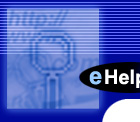

What is an Automated Help Desk Anyway?"Not again!" the IT specialist exclaims. "This printer keeps jamming when I try to print this document on legal paper. I better call the Help Desk and see how we can fix this again." Whether you call it a help desk, technical support, the problem management center, or even the customer support center, chances are your company has a place to contact when you have a problem or issue that needs solved. The Incoming Calls Management Institute says that a help desk is "a term that generally refers to a call center set up to handle queries about product installation, usage or problems. The term is most often used in the context of computer software and hardware support centers." So, if we apply this further, an "automated help desk" is a call center that employs some type of help desk software to keep records on the calls and enable one person to access an electronic journal for common "fixes" for a selected problem. But an automated help desk or problem management software can do much, much more. Here, take a look at what some help desk software products can do:
As you can see, an automated help desk can wear many different hats, ones you haven't even pondered. If you have a help desk or support center, it may be time for you to consider automation. But then you have to decide what questions you need to answer? © This material may not be reproduced or distributed without the expressed permission of help-desk-software.net, or any of its entities thereof. |

